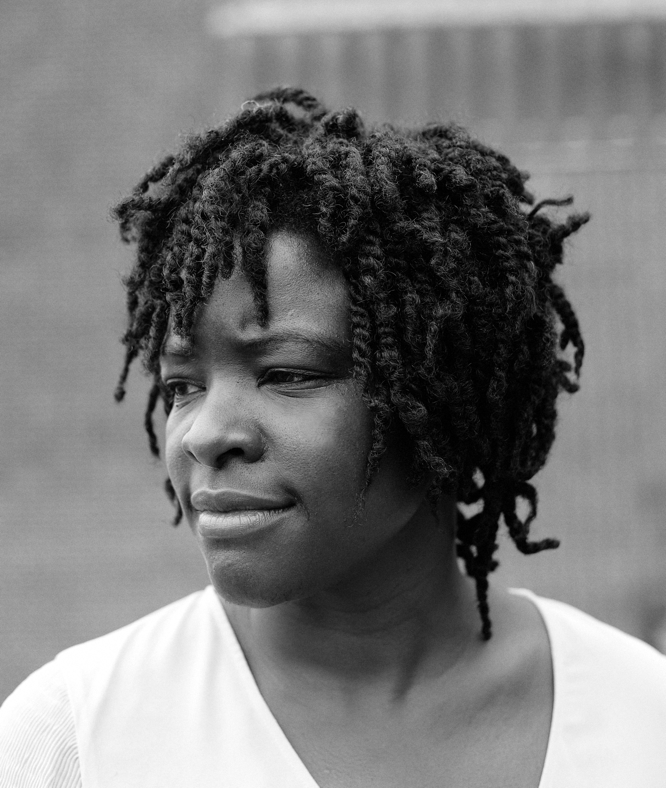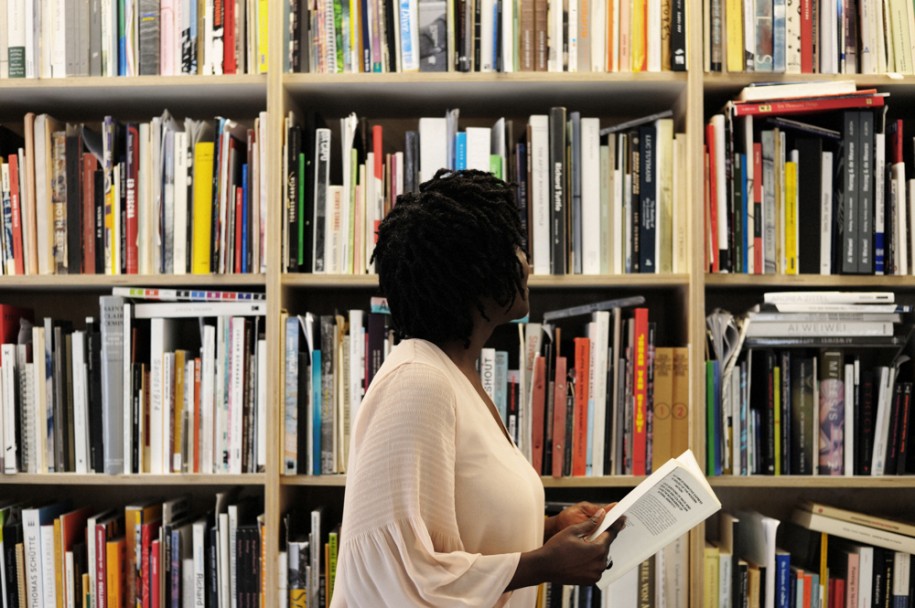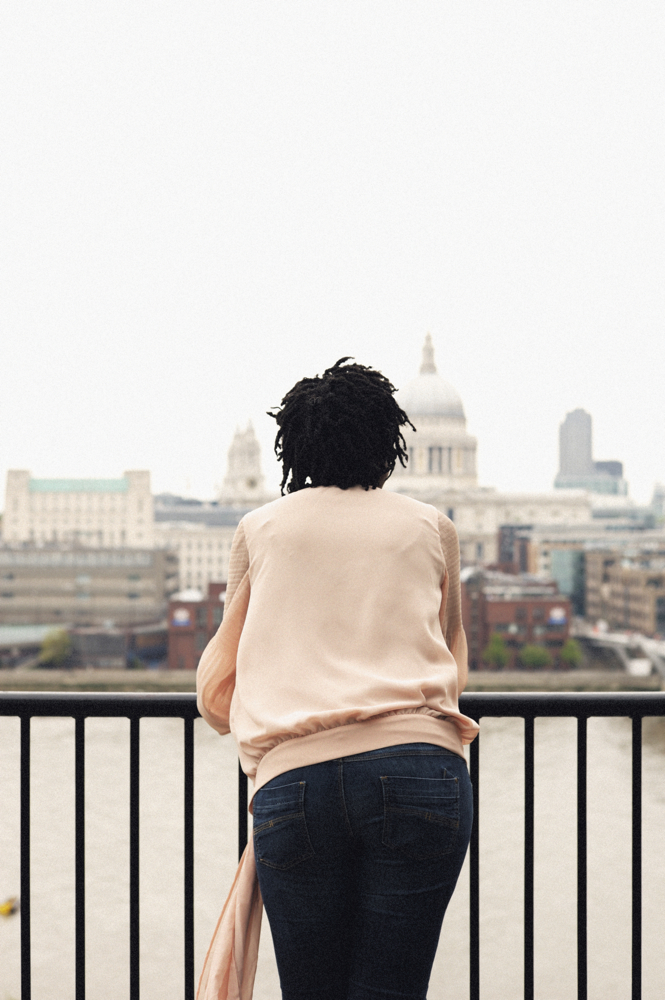ARCHIVE
ELVIRA DYANGANI OSE
interview by Carson Chan

CARSON CHAN You were recently appointed Curator of International Art at Tate Modern and, given your expertise in African art, you will be contributing to Tate’s ambitions to expand its reach on the continent. Since you were just in Senegal for the current edition of Dak’Art, Dakar might be a good place to start our conversation. The first Festival of Negro Arts in 1966, initiated by poet-politician Léopold Sédar Senghor, Senegal’s first president, is one of the most long-standing African cultural events. 1966, in post-colonial Africa, as it were, was a groundbreaking moment, but would you say that the perception and acceptance of contemporary art has changed since then? At the opening, André Malraux said that the most important thing about the festival was its potential to create a new African cultural identity through art. Has modern and contemporary art become a source of cultural identity in Africa or has it remained élite?
ELVIRA DYANGANI OSE One thing to keep in mind is that art in Africa is fundamentally connected with local communities, with society. It is part and parcel of everyday life, so it’s hard to make that distinction. Indeed, art, as defined by modernist artist Ben Enwonwu at the 1966 colloquium, was extremely connected not only to society and to ancestry, but to nature, to the nature of doing. Enwonwu was Igbo, and he used an Igbo concept, nka, which literally means “the making of,” to define art. The 1960s in Dakar was also when opinions about art split— broadly speaking—between the followers of Senghor, the first professors at the École de Dakar, and those associated with Issa Samb and Laboratoire Agit-Art, among them people such as DjibrilDiopMambetyand ElHadji Sy. Both groups tried to preserve traditional elements while keeping a post-colonial subjectivity in the equation. The former tried to define the official Senegalese art and was supported by the state. The latter was calling for a political awareness and social engagement they saw missing in the official narrative. I’ve just roughly described one moment in Senegalese art. We should bear in mind that whenever we talk about African art, we are talking about the various contexts throughout Africa, including the diverse narratives and multiple audiences and practitioners of the continent. What the general public in Africa perceives as contemporary art could be as well many different things. Valentin Y. Mudimbe elaborates on this in his famous essay “Reprendre.” In short, I think African art has gone far beyond Malraux’s expectations. Artists and curators have created platforms for artistic discourse in places where such things never existed while actively transforming the existing ones.
CC In terms of African art and ideology, Senghor’s immensely influential notion of négritude opened up another frame of critique. Négritude was a powerful idea, particularly for the post-colonial moment, because it sought to define an African commonality not only between Africans but also within the diaspora. Négritude advocated a global black identity, but as empowering as it was, it also smoothed over many important differences in the world’s black population. Art historian Ola Oloidi pointed out early on that négritude often supported genre painting and apolitical aesthetics rather than true social engagement. In terms of identity, négritude liberated while it flattened. Has it been more helpful or detrimental?
EDO That’s an interesting question but very difficult to address in a short answer. It’s important to understand négritude historically, and although I think you were right so far in emphasizing Dakar ’66 as a center for this discourse, there are aspects related to négritude both before and after that are fundamental to the understanding of blackness. There is no doubt that post-colonial Dakar is crucial to our discussion, but so are other moments, places and principles in which that idea has been shaped and introduced into modern art production like, the New Negro, Black Internationalism and Pan-Africanism. Everyone interested in these moments should read Brent Hayes Edwards’s The Practice of Diaspora (2003) and Elizabeth Harney’s In Senghor’s Shadow (2004). And since Senghor was a politician, the definition of négritude was not just a theoretical proposition; it was also a practical one. In Senghor’s Dakar, one could have a corporeal experience of Africanness, given that blackness or négritude actively informed cultural and artistic policies. Since that moment sixty years ago, I would say that Dakar and many other cities are still dealing with the discrepancy between official national culture and one that is determined by artists’, cultural producers’ and the audience’s desire.
CC So far, we’ve only framed African art through politics. Could we talk about it apolitically? Could we discuss it as if it were ideologically neutral or is it still too early to leave this moment?
EDO Well, for me art is political and politics. Even if we are talking about current art practices, we can’t ignore the fact that politics was paramount in the formulation of different African national cultures in the 1950s and ’60s. It’s true that African art itself was a term developed initially by the West—Enwonwu and others have challenged it already. Today, even though things have changed dramatically, it’s still a question of letting the “Other” became narrator and protagonist of his or her own story.
CC It’s a question that leads us into the debatable game of classification. Is the diaspora part of the African art scene? Latifa Echakhch, who is from Morocco, has never shown there. Living in Switzerland, it is easy to argue that she has developed a voice completely detached from her Moroccan roots. Is she “Other”?
EDO I think of Africanness in an expanded sense. To address the diaspora one has to look to each specific circumstance. Ernest Mancoba, for instance, could not have developed his work in South Africa in the 1930s. He had to leave in 1938. Ibrahim El-Salahi left Sudan in 1954 to study at the Slade School in London. He returned home to be part of the revolution. Many artists left but decided to return, others remain in the diaspora. The latter, together with artists of African descent, are African to me as long as they engage thematically and aesthetically with Africa. Sammy Baloji works in and about Congo. He’s also developing a biennial art initiative in Lubumbashi with local artists. How can we question his authenticity just because he now lives in Brussels?

CC We can question it when it becomes a brand—when it becomes ethnographic self-fashioning. Some diaspora artists like Kehinde Wiley, Yinka Shonibare, Chris Ofili, and, to a degree, Wangechi Mutu, seem to deploy their blackness as a calling card.
EDO But who is calling for that card? The artists or those talking about them? The problem many black artists faced is that their biography and geographical provenance becomes an aesthetic value. Blackness is too complex; it’s broadly discussed, and in the arts, as in society in general, its meaning shifts with time. Blackness, say, in the UK was completely different in the ’70s than what it was in the ’80s, and than to what it is now. We also have to be clear about whether blackness is something deployed by the artist, or perceived by the interpreter or viewer. Some artists find themselves in a cul-de-sac as they’re constantly being exhibited in contexts that limit and exploit their blackness. Somebody like Wiley uses blackness to empower black youth, the people that represent the world that he lives in are inscribed into art history through his painting. For me, his work expands our conception of blackness into something that many people can read through.
CC Beyond blackness, Africa—as a synonym for social, political and contextual engagement—can create difficulties for many artists. The first reviews that South African artist Candice Breitz received at the start of her career were mainly texts about apartheid. The work itself was almost secondary to the discourse it was seen to participate in.
EDO I don’t think it is possible for African artists to erase Africa completely from their work. Africa is such a general label that it could mean everything and anything. At the same time, the landscape of African art has changed so much in the past two decades: now there are clear protagonists and narrators, and artists own their narrative. This is not to say that we’ve stopped struggling with how African identities are portrayed, or how African artists are considered. When “Black is Beautiful” was proclaimed, it was to highlight the positive aspect of something not understood as such. Terms like “black” and “negro” have been constantly translated by each artist, in each time, in each cultural context.
CC Can we do away with the term “African artist” and just say “artist”?
EDO Exactly! That would be the point for me; that would be the step forward. You should look at the way in which artists address certain topics and talk about them in that context. Works by Europeans don’t always signify Europe. Nor does work by Americans always signify the US. Nobody asks them to be a European or American artist as such. Africa is not the only conceptual context in which artists there operate.
CC Clearly these labels are only important for Western critics and observers, right? Having just curated the 4th Marrakech Biennale, and going through some of the critical feedback, it seems that the Western critics cannot but see Africa, or Marrakech, through a politicized lens. People wanted to know why I didn’t explicitly address the so-called Arab Spring or post-colonialism. For our local audiences, this would be as strange as, say, an Indian curator going to Berlin to make an exhibition about the Holocaust, no? It would have been what Walter Benjamin, and later Hal Foster, called “ideological patronage.” The point of the Marrakech Biennale wasn’t to demonstrate to Western art observers how conscious and aware I was of the social dynamics of post-colonialism. The point was to make an exhibition that, for three months, catered to a number of local publics that generally have very little access to contemporary art, and who will hopefully find joy and interest in experiencing it.
EDO I think that you achieved that in a way, but you still have to contend with your critical responses that see engagement with context differently. In general, exhibitions like biennials are for the local audience, but not only. I’m talking about an audience beyond the city of Marrakech, beyond Morocco. I would say that as curators, we should be aware of all audiences around the world. Maybe you decided to make a biennial that didn’t address these other publics, but let’s not forget they are there as well. It’s a difficult equilibrium; but, in the end, it’s the curator’s choice.

CC I think so, yeah. In Marrakech, we exhibited a number of works in various public spaces to engage a diverse audienceship. In 2010, you organized a project with Younès Rahmoun for Doual’Art that was an intervention within a community and encouraged direct engagement. In a sense, the non-physical museum, or “discursive museum” as Katarzyna Pieprzak has called it in her study of art in Morocco, seems to have particular success in African contexts. You’re now working at the Tate, and are of course aware that western museums have traditionally seen African collections through a colonial or ethnographic lens. How will you reconcile the on-the-ground, performative nature of much African contemporary art with your acquisitions?
EDO You’re absolutely right that one of the most important aspects of African art today is its presence in and engagement with public space. The number of urban interventions and platforms dealing with public space has increased dramatically over the last twenty years. For instance, in 1991, in Douala, Cameroon, Marilyn Douala Bell and Didier Schaub founded Doual’art. It’s one of the most prominent institutions in Africa; their projects connect artists with communities, challenging definitions of the public sphere and civic society. This question is extremely important to my approach to modern and contemporary African art. Street theater was already quite prominent in the 1940s and ’50s in Nigeria. Theater and performance was, and still is, part and parcel of African cultural experience in pre-, post- and during colonial times. To get back to your question, at the Tate we are looking at modern and contemporary African art, going beyond the realm of tradition-based art that has conventionally informed ethnographic approaches to the continent. In London, the British Museum and the Victoria and Albert Museum have this covered. Looking at modern and contemporary African art production and how it has been framed historically, Tate’s strategy in the continent tries to challenge established canons while building up local expertise and networks.
CC What are the biggest challenges in recontextualizing African art for a London or international public?
EDO The first thing that needs to be clarified is that Tate is not building a collection of African art. What we are doing is increasing the presence and visibility of African art within the Tate collection. This is already a huge challenge. You have an existing collection that includes art from all over the world with which we want African artists to get in a dialogue. I’m interested in telling the story of a universal art history. We’re building an international and inclusive narrative. In any case, you can’t tell the story of European and American art without talking about the contribution of African and diasporic artists. Going back to your suggestion of taking away “African” as a signifier for artists from Africa, I would say that we’re doing that by including these artists in exhibition contexts that don’t rely on the artists’ biography as an aesthetic value.
CC Will the Tate be staging projects in Africa as well? It strikes me that art education, particularly of contemporary African strategies, would be more urgently needed throughout Africa than in the UK.
EDO Yes. In fact I’m really very happy and honored that my curatorial post is supported by Nigerian Guaranty Trust Bank, which has been in partnership with the Tate since last year. This partnership included the creation of a dedicated curatorial post, an acquisition fund to enable the Tate to enhance its holdings of work by African artists, and an annual project. The annual project complements the collecting process. For Tate, collecting begins with meticulous primary research. By providing an experimental platform for contemporary non-collectable works, the GTBank annual project will allow us to explore the here-and-now of the continent, individuate emerging artists and the most innovative practices. The plan is to develop initiatives in cities both throughout Africa and in the UK. It’s an incredible time to be working with African artists at Tate. I feel like I’m on the back stage to something incredible that’s about to happen. In terms of scope, of breadth, of reach, in the next years, the Tate collection is going to be unbelievable.



